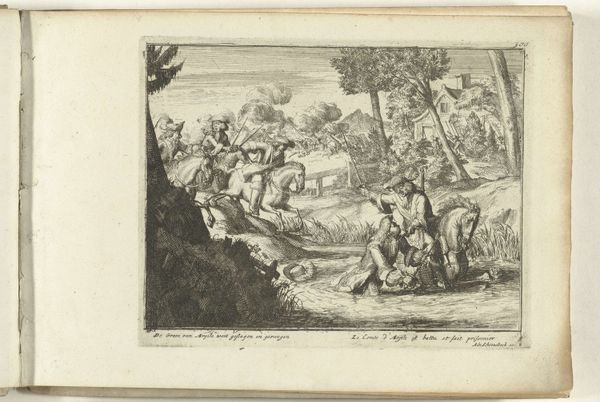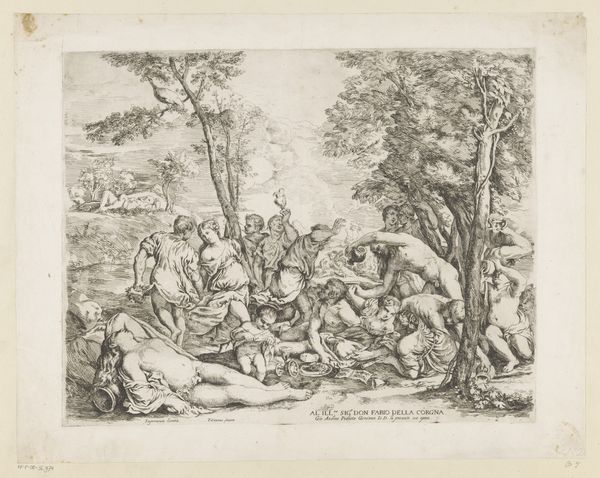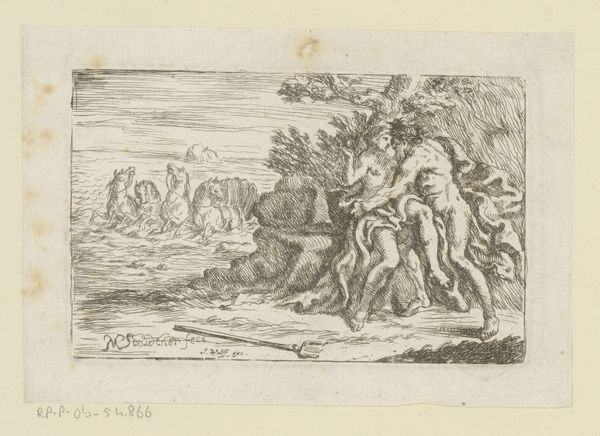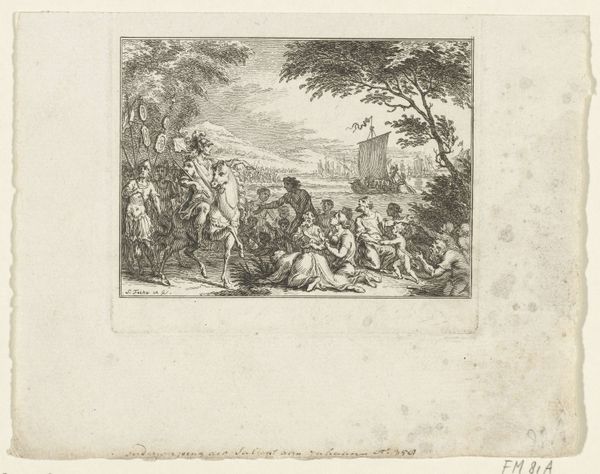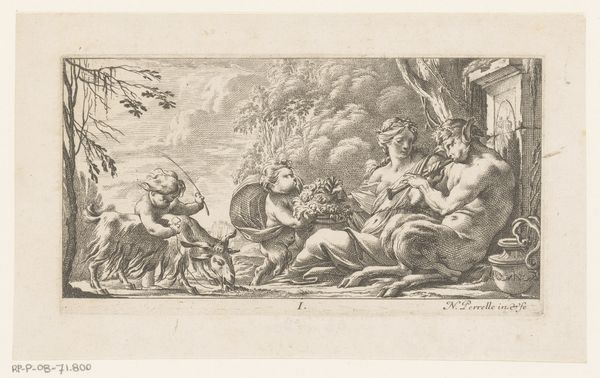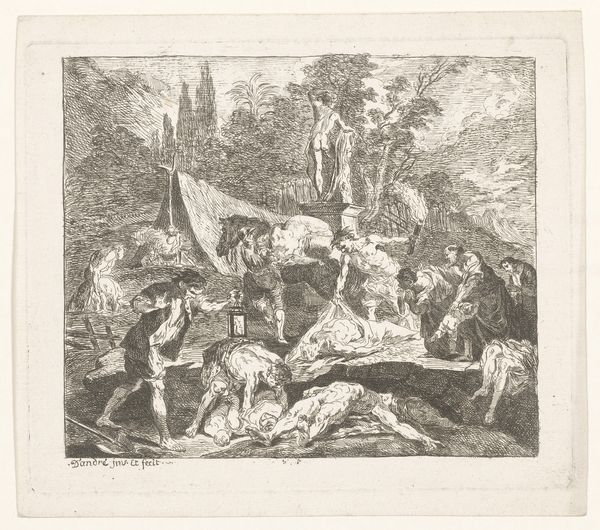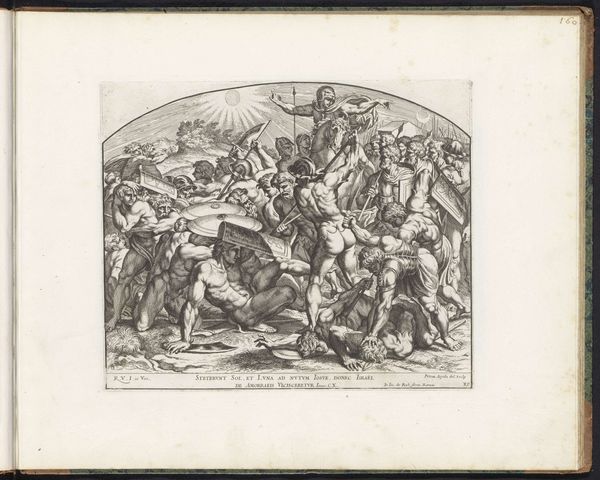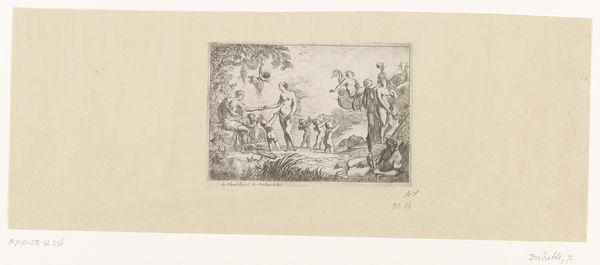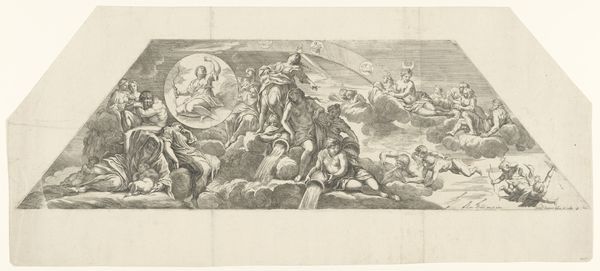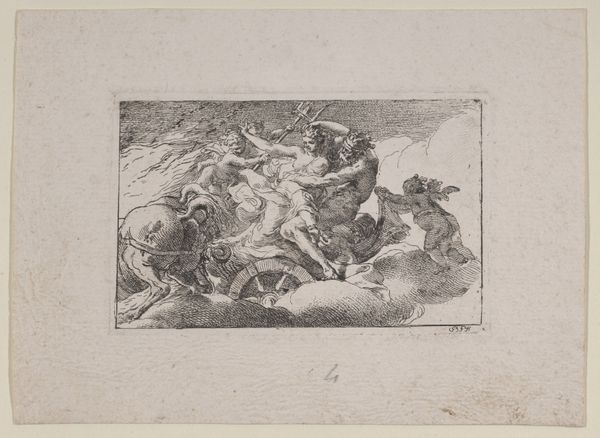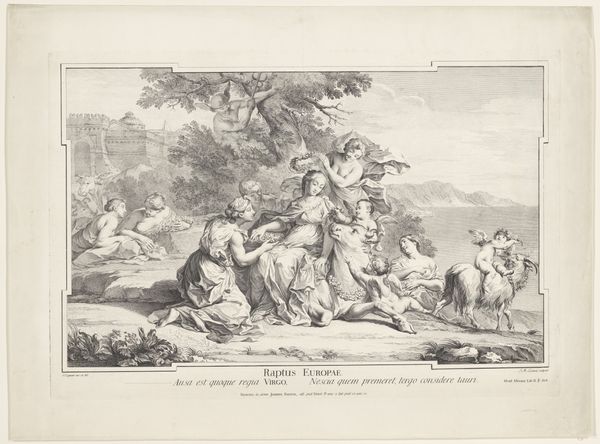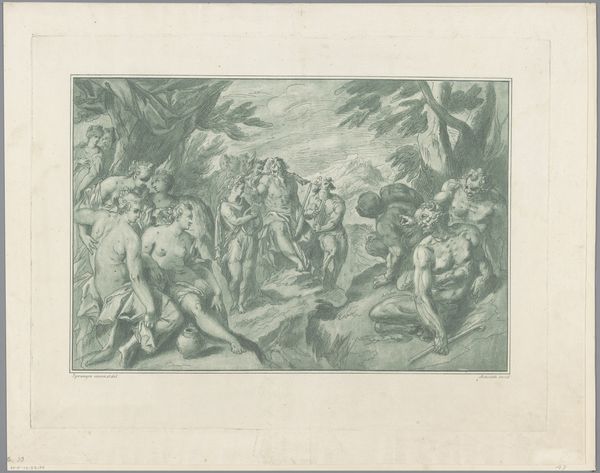
drawing, etching, ink, pen
#
drawing
#
comic strip sketch
#
ink drawing
#
allegory
#
baroque
#
pen sketch
#
etching
#
landscape
#
figuration
#
personal sketchbook
#
ink
#
sketchwork
#
ink drawing experimentation
#
pen-ink sketch
#
sketchbook drawing
#
pen
#
history-painting
#
storyboard and sketchbook work
#
sketchbook art
Dimensions: height 146 mm, width 204 mm, height 202 mm, width 139 mm
Copyright: Rijks Museum: Open Domain
Editor: This drawing, titled "Europa en de stier en Maria ten hemelopneming" (Europa and the Bull and the Assumption of Mary), was created sometime between 1708 and 1779 by Honoré Coussin. It’s an ink etching, and the composition feels very classical. How would you interpret this work? Curator: Well, on the surface, we see these two distinct mythological and religious scenes mashed together – Europa's abduction and the Virgin Mary's ascension. What I find interesting is to consider *why* Coussin would juxtapose these two narratives. Both involve a kind of divine intervention, certainly, but also narratives of power, of patriarchal dominance, and, perhaps, resistance. What's implied when they’re placed side-by-side, visually? Editor: I hadn't thought of it that way. I just saw the separate stories, but maybe there's a connection through ideas of power and even exploitation. It seems a bit subversive, especially given the religious context of the time. Curator: Precisely. Coussin is working during the Enlightenment, when traditional power structures were being questioned. Are these figures ascending or being taken? Is there agency, or are they just pawns in a larger divine scheme? Consider Europa's expression—is that fear or something else entirely? Editor: It’s a good point. Seeing them both together does highlight the possible lack of control for these women in otherwise glorified events. Curator: Exactly! And how does this lens impact our understanding of contemporary struggles for autonomy and freedom from oppressive systems? These old works reflect contemporary themes in many ways, no? Editor: Absolutely! I came in thinking it was a straightforward historical piece. Now, it's all about power dynamics, control, and the interpretation of these narratives through a feminist lens. Curator: That's the beauty of engaging with art, isn’t it? To continually re-evaluate and find new meaning across time.
Comments
No comments
Be the first to comment and join the conversation on the ultimate creative platform.
